The astonishing ant diversity of Papua New Guinea
In this photoblog contribution, Phil Hoenle shares some amazing pictures taken during his field work in Papua New Guinea in 2022. Enjoy!
A Photoblog contribution by Phil Hoenle. All pictures © by Phil Hoenle.

New Guinea is the second-largest island in the world, situated in the ocean just north of Australia. With its almost continental scale, it encompasses a diverse landscape, which includes lush lowland rainforests, but also rugged mountain ranges that span further than the European Alps. Two countries claim its landmass and surrounding islands: the West of Papua belongs to Indonesia, while the East is the independent state of Papua New Guinea (PNG).
New Guinea hosts an impressive biodiversity that has fascinated biological explorers for centuries, and it never quite lost its almost mystical aura of adventure and discovery. Biologists of world fame such as Alfred Wallace, Ernst Mayr and also Edward Wilson ventured here, in awe of the unusual flora and fauna that is an amalgamation of Australian and Asian elements, forming the Melanesian region. The island is also a cradle of human diversity, with over 900 languages and a complex array of cultures that are comparatively preserved to this day.
So, of course, visiting New Guinea and studying its incredible ant fauna is an opportunity only a few would pass up. I recently joined Petr Klimes’ research team as a post-doc at the Czech Academy of Sciences (https://antscience.com/), and was happy to be able to conduct five months of field work in New Guinea in 2022. During the field work, I got lots of support from by my friend and PhD student Nils Schumacher and our PI, Petr Klimes. Broadly, we are interested in ant community assembly along elevational gradients, and we conducted several manipulative experiments targeting the tree-dwelling ant fauna. The research project took place in the region of Madang, to the North-East of the island, along the slopes of PNGs highest mountain, Mt. Wilhelm.
We frequently visited three research sites that were hosted by the local communities and have been irreplaceable to our research and field work. We continue to be very grateful for their relentless support. During the long field stay, we had many encounters with fascinating ants, some of which I’d like to share with you here.
Part I: Lowland Forests of Baitabag and Kausi

The New Guinea Binatang Research Centre (BRC), where we spent most of our time, is located along the coast, within the lovely village of Nagada. Here, we visited not only coral reefs and mangroves but also the shore, which offers a surprising variety of interesting ants. For instance, there is Odontomachus malignus, one of the few ants that could be considered true coastal specialists. They build their nest fearlessly close to the shore (in old coral reef remnants), and the beautiful red workers can be seen patrolling the sand beaches.
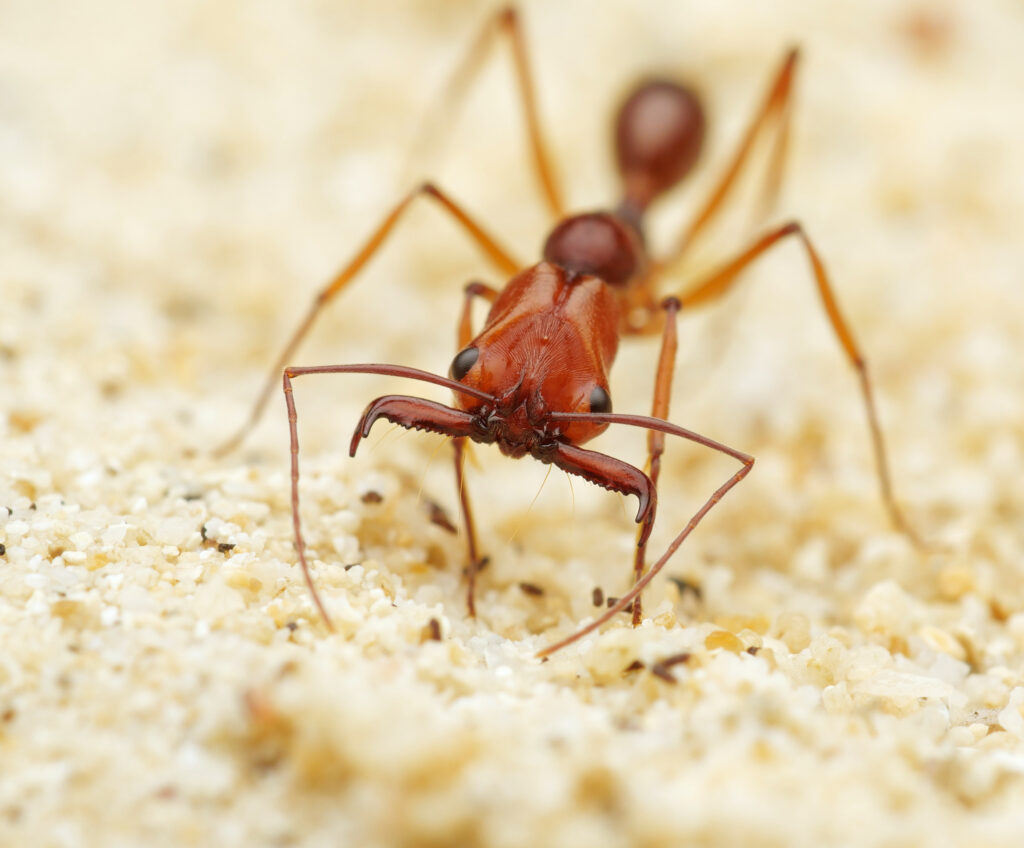
The deforested parts around the village are overgrown with shrubby vegetation, which hosts a distinct ant fauna from the surrounding lush rainforests. I believe this habitat and its ants are reminiscent of the famous Australian Bush, but take my speculation with a grain of salt as I’ve never been to Australia.
Here, we found Iridomyrmex, Polyrhachis dives, as well as huge nests of Papyrius nitidus. On some of the trees, there were Hydnophytum ant plants, which often host large and aggressive Philidris colonies. However, to my great joy, inside one of the ant plants we also discovered a nest of strobe ants, Opisthopsis manni. It’s both funny and at the same time unnerving to watch their erratic movements.
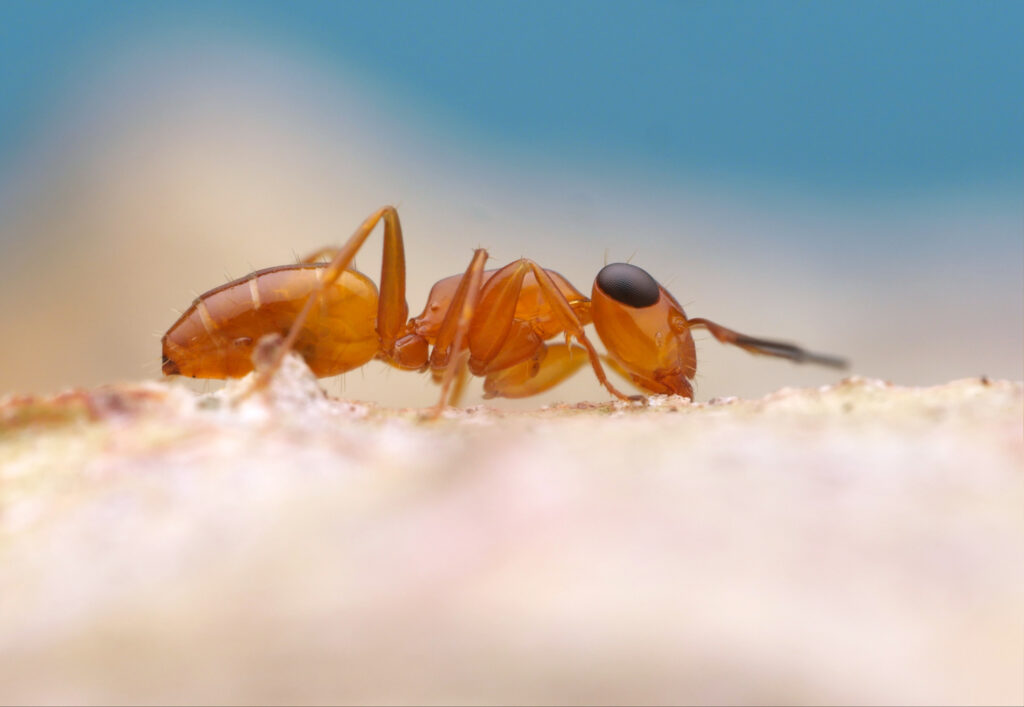
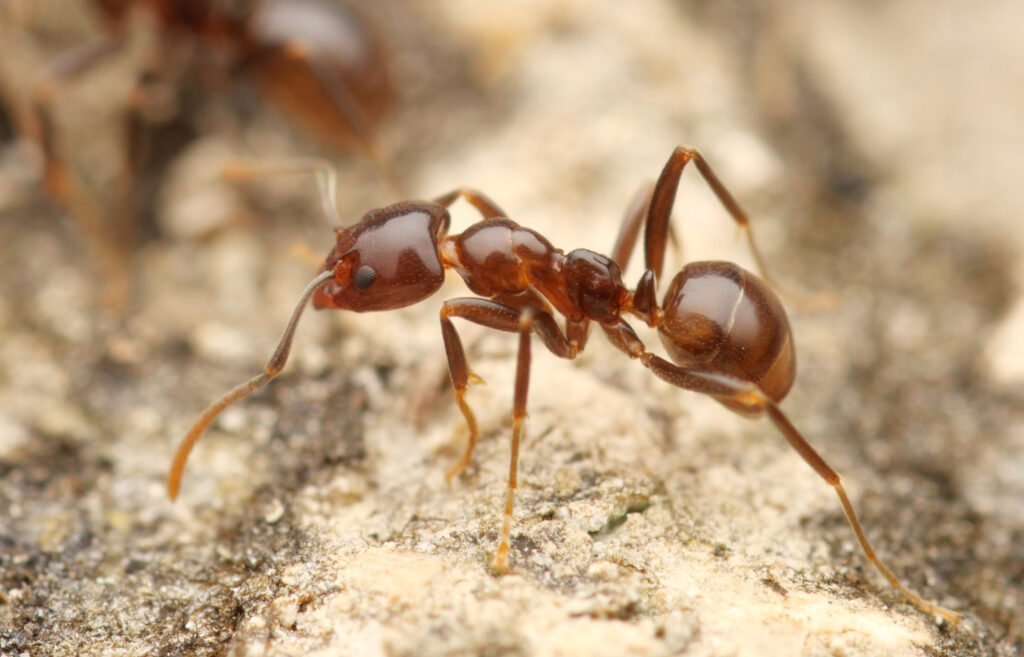
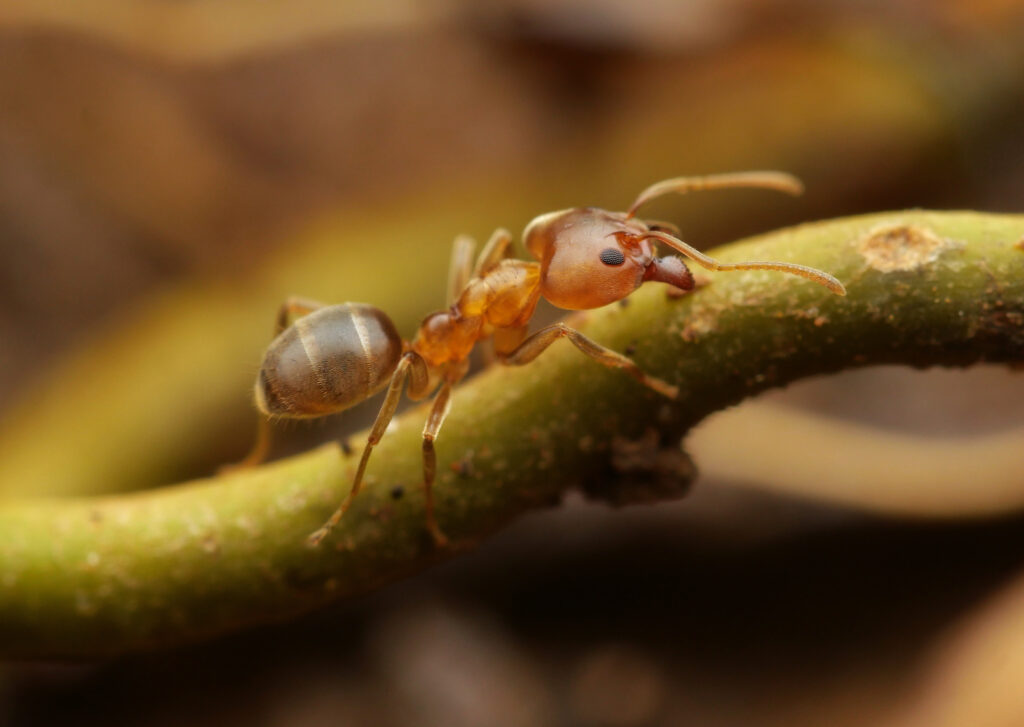
Not far from the BRC is the village Baitabag. This is a community which decided to preserve its forest from the encroaching forest logging companies long before conservationists and researchers arrived. This decision paid off, and now the BRC works in collaboration with the villagers, who continue to preserve their forest and are now involved in manifold research projects. The conservation area even has its own canopy crane, though it had technical troubles when we were there, as long-term maintenance in PNG poses a challenge.
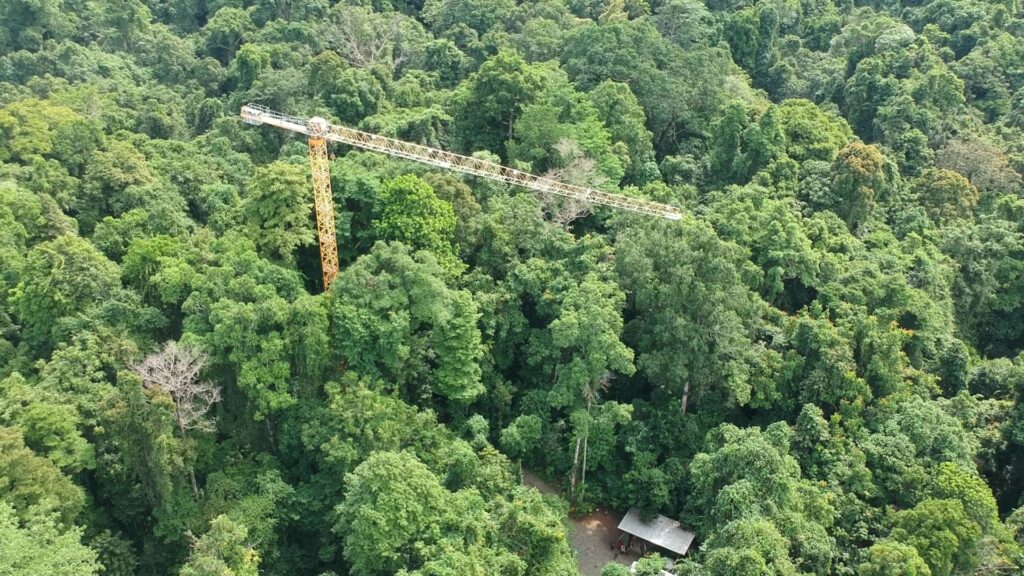
The rainforest of Baitabag is dense, hot and humid, and full of ants. The species composition here is characteristic for typical lowland rainforests of New Guinea, including several typical Australian ant lineages such as Rhytidoponera. On the forest floor, Tetramorium and Pristomyrmex are common sights, and the vegetation hosts a stunning diversity of Polyrhachis. Particularly interesting are several species of Pheidole that are very spiny, an odd feature that is uniquely common in Melanesia.
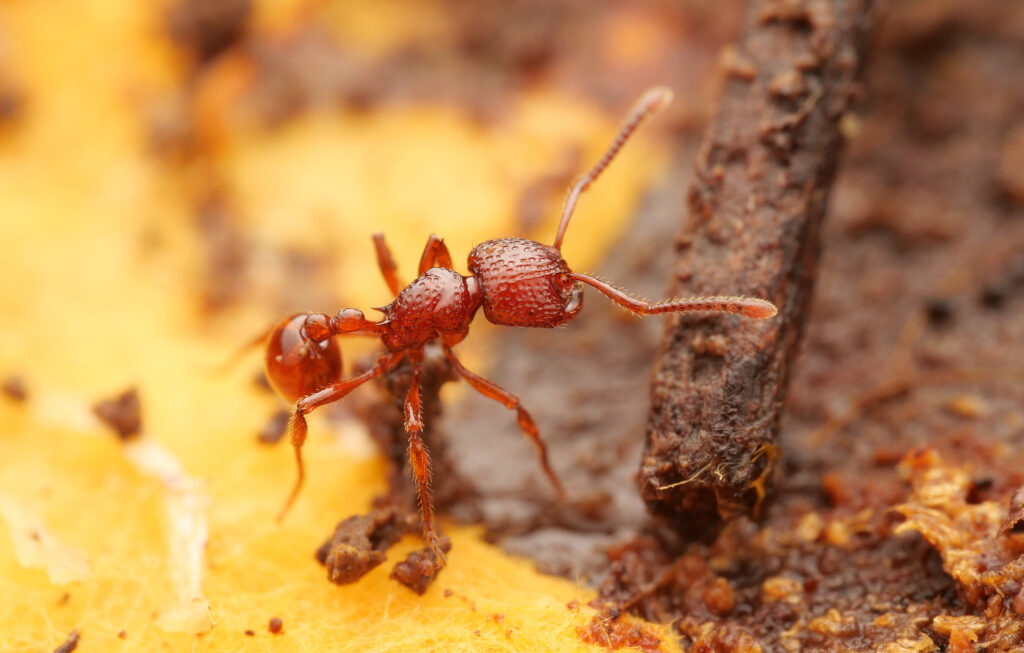

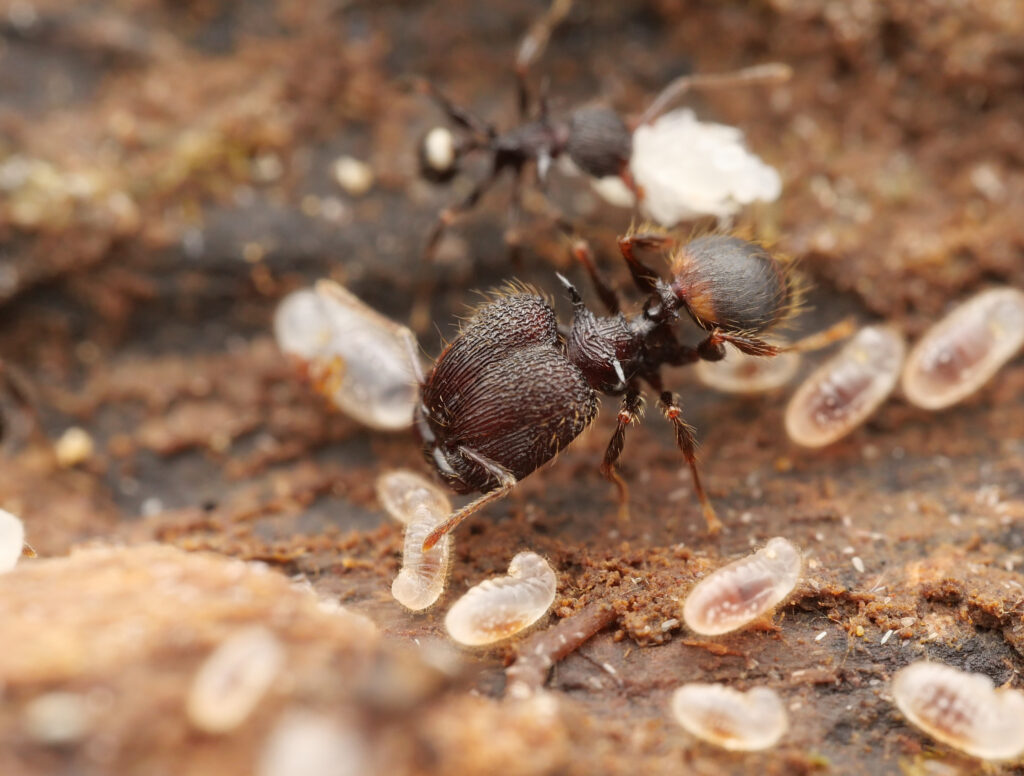
Leptomyrmex ants are fascinating. Their unusually long legs enable them a fast and efficient transport of large, otherwise unhandy prey items. Sometimes when disturbed, they reacted with an immediate colony evacuation, possibly an adaption to avoid getting raided by army ants.

Leptogenys breviceps is a frequently encountered species of Leptogenys, an otherwise rare genus with a fascinating diversity in life history. This species lives in big colonies that move mostly underground, reflected by the relatively robust body built. However, once we stumbled upon a colony migration on the surface in bright daylight. The nomadic behavior provides us with a unique opportunity to observe them and their otherwise hidden nest contents.
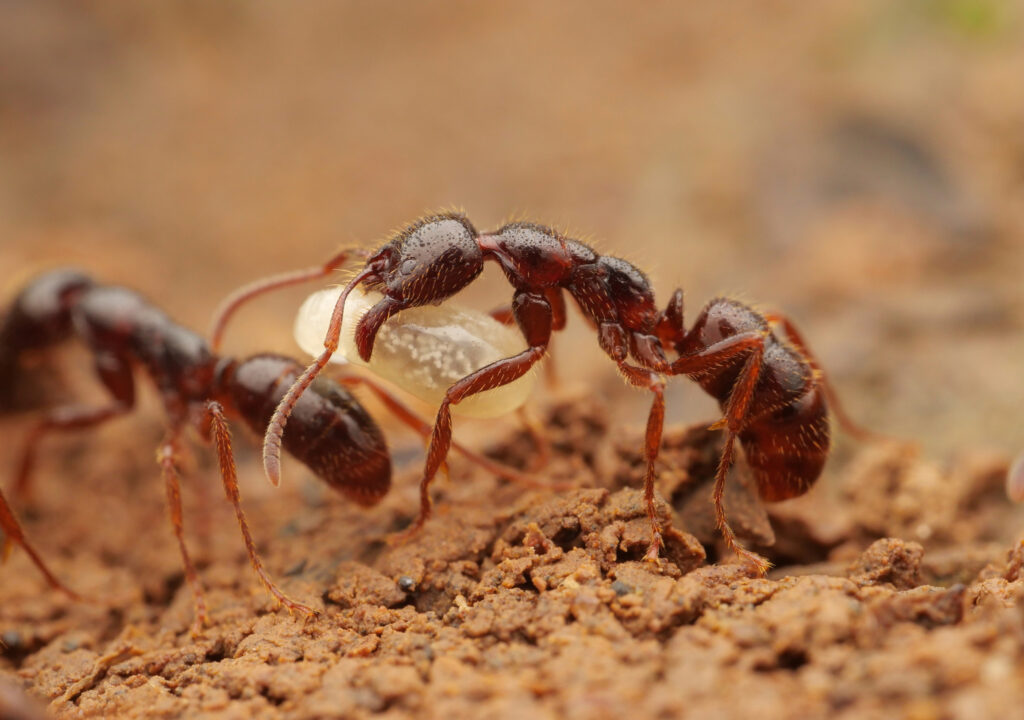
The Strumigenys of Papua are, as in other tropical parts of the world, astonishingly diverse in species and forms. Most Strumigenys have small colonies with monomorphic (same-sized) workers that are solitary hunters of leaf-litter arthropods. However, one of the more common species here, Strumigenys loriae, is quite unusual in this regard: Colonies get large (for a Strumigenys, that is), and have worker polymorphism.
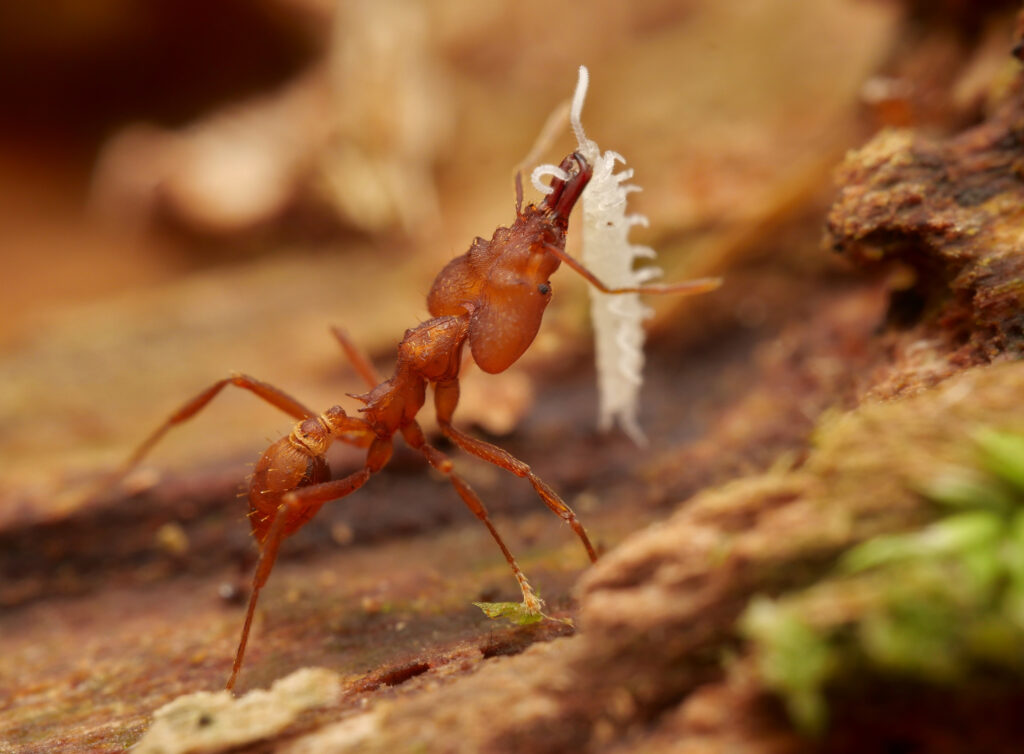
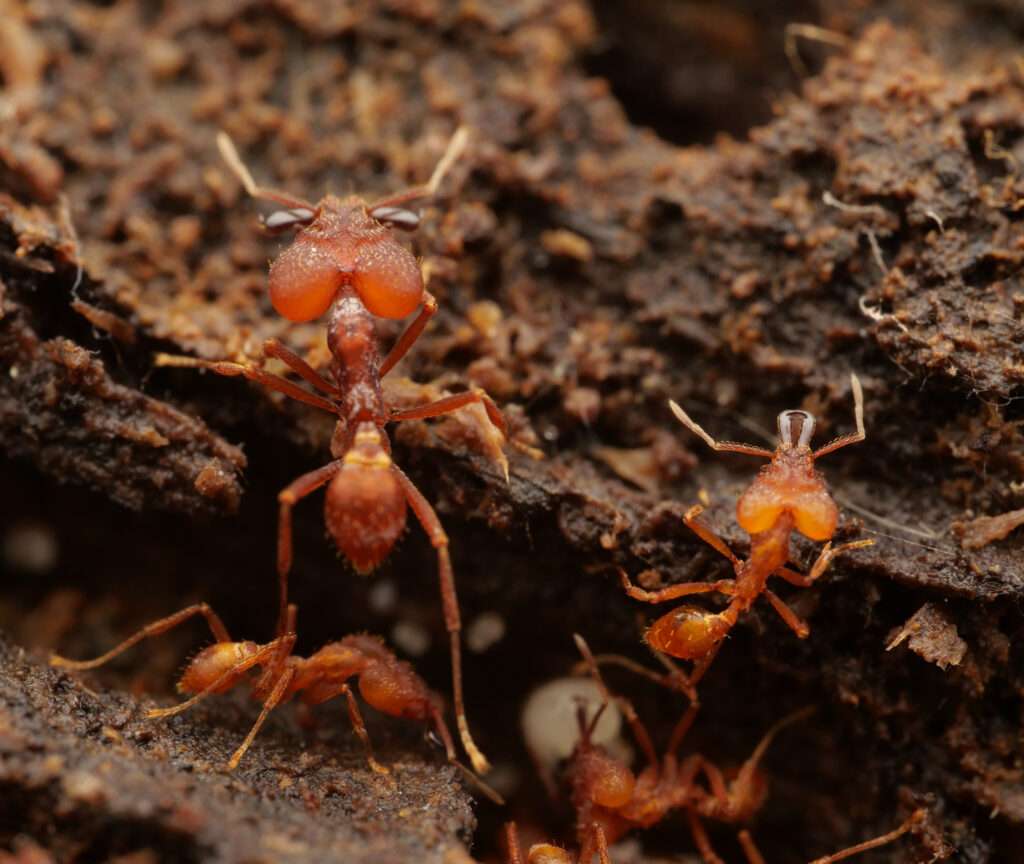
Unfortunately, it’s not all paradise in Papua: like many other tropical islands, the ant communities here are invaded by an array of foreign species, most commonly the yellow crazy ant (Anoplolepis gracilipes) and the little fire ant (Wasmannia auropunctata), both of which built polygyn-polydomous colonies with very high abundance (mostly in disturbed areas).
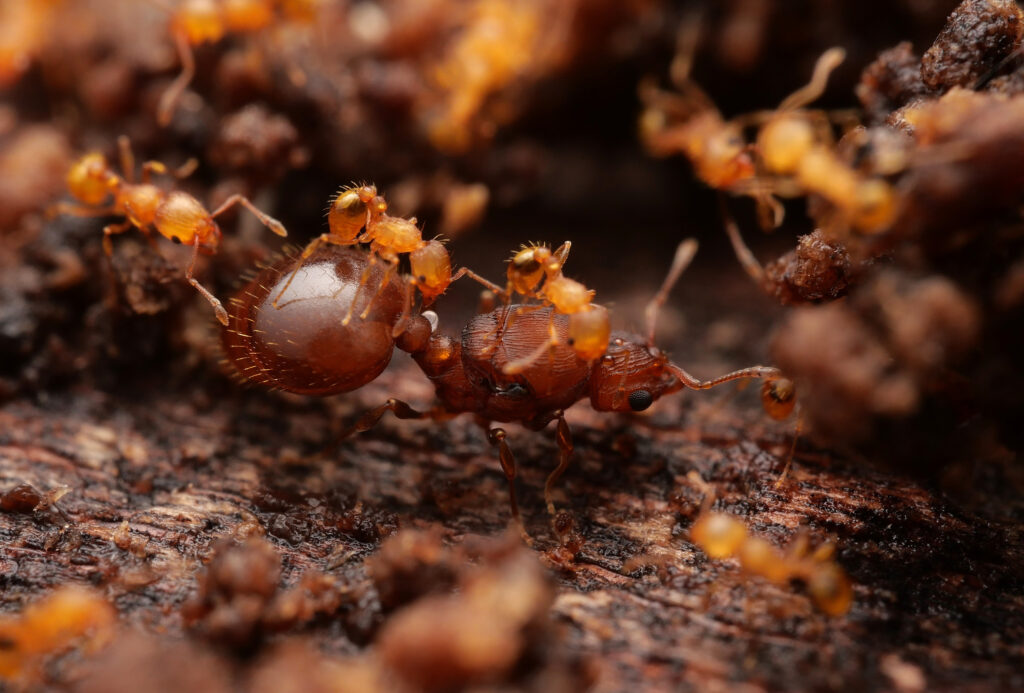
Located at a picturesque location next to a larger river that flows from the nearby mountains, the tiny village of Kausi consists of just three large families. Here, we conducted a substantial amount of field work. When we arrived here for the first time, a nice “research station” was built for us from scratch with some bamboo! Our guest family took good care of us during our stay, and were delighted to help us with field work.
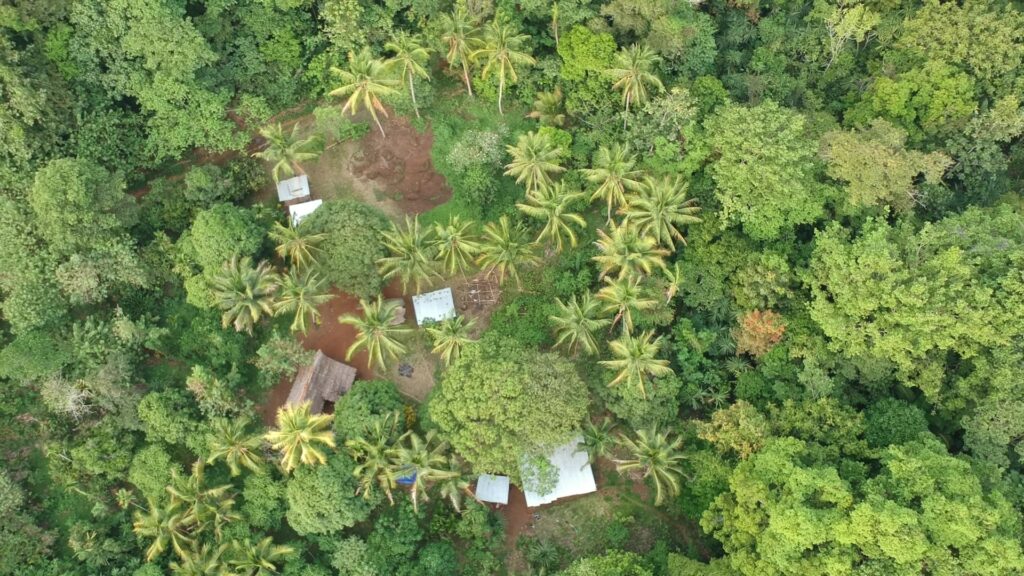
Some parts of the forests have been selectively logged, and a high density of pigs around the village contributes to particularly muddy undergrowth. However, there are also beautiful old-growth forests remnants, carefully watched over by the families. Here, the ant fauna is reminiscent of Baitabag at the coast but is not quite the same.
In the leaf litter, I witnessed one of the most adorable ants: Tetramorium fulviceps. The tiny ant species (about 3 mm) has a cuddly appearance caused by a dense layer of short hairs.
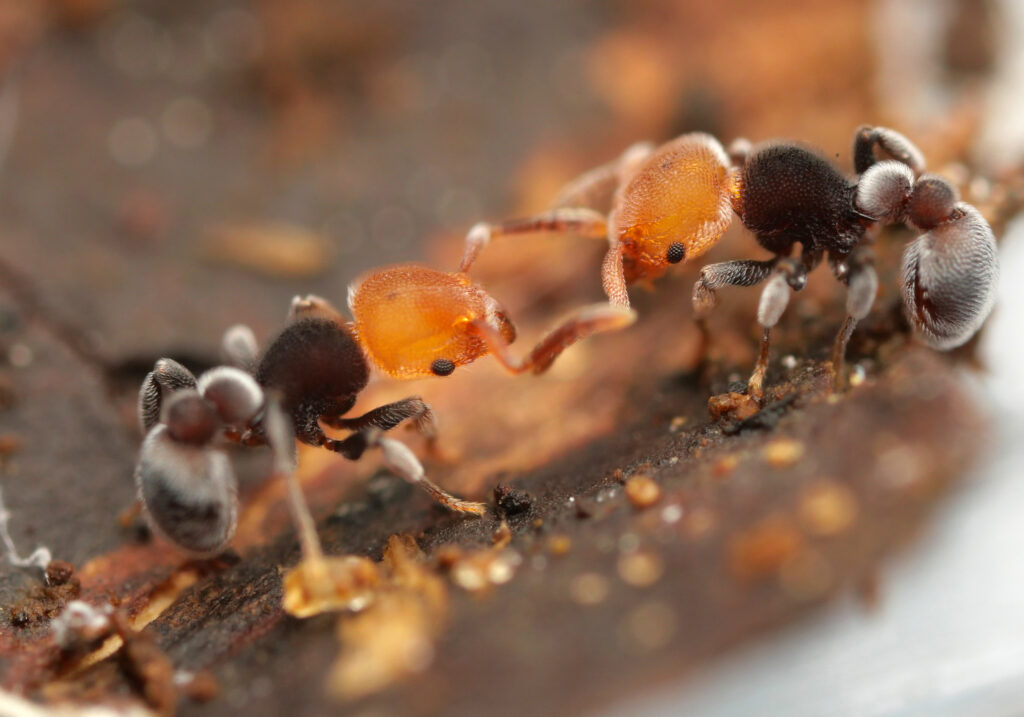
In the forest, we sometimes spotted workers of Cardiocondyla paradoxa running on top of old logs. Some species of Cardiocondyla have a fascinating mode of reproduction where males are worker-like and compete with each other, sporting large mandibles. A nest usually has one male that dominates reproduction.


The canopy is home to a lot of unusual ant species that you don’t get to see so easily. One day after baiting the canopy in heights of over 20 meters, Nils returned with some very fascinating, highly polymorphic Podomyrma. Majors of this species have almost swollen-looking heads.
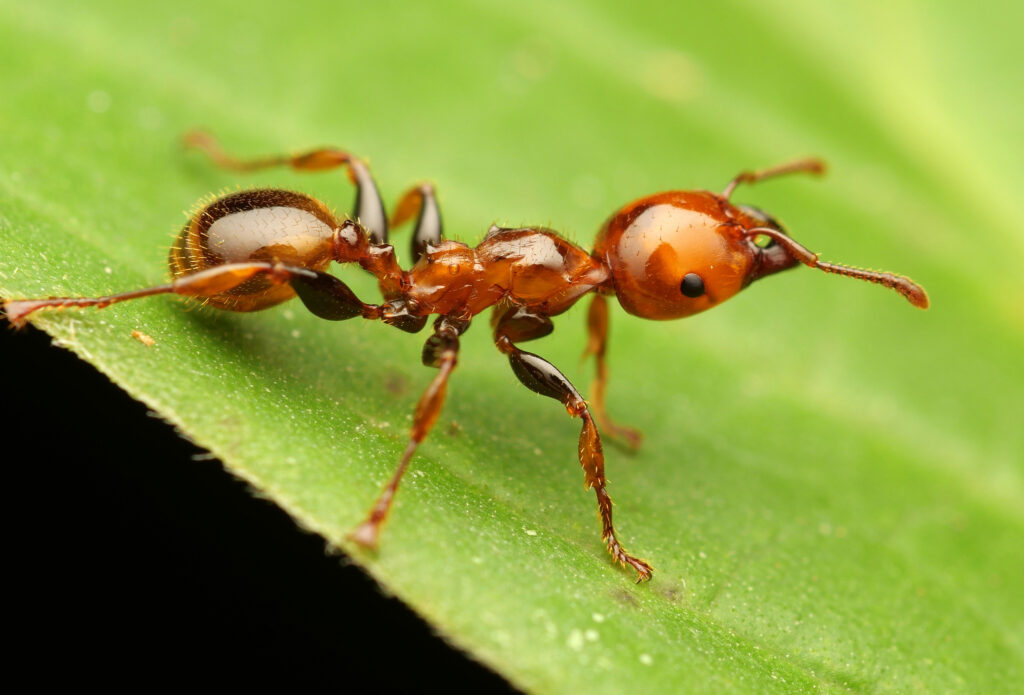
One of the largest ant species here are Polyrhachis species of the sexspinosa group. These ants are not only very big, but also look stunning with their dense and golden pubescence, and have a calm behavior. I find them surprisingly reminiscent of Diacamma, but I am not really certain if there is truly some mimicry going on. Nests do not have many workers and are usually located between some old leaves on the trees.
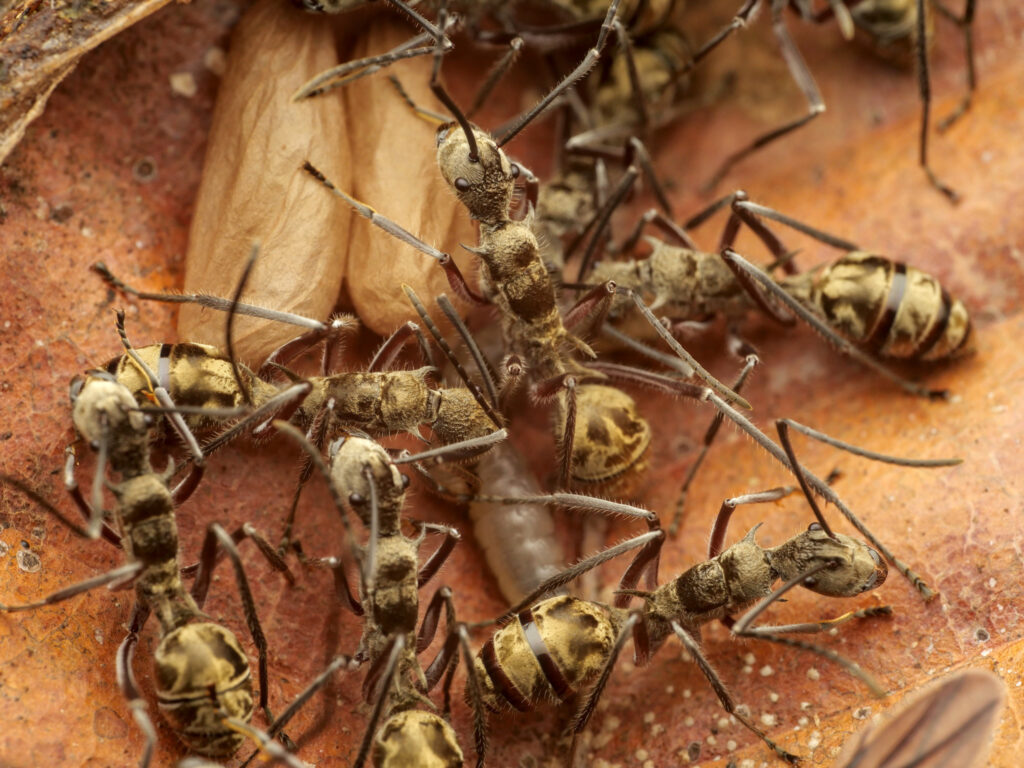
Part II: Numba: Ant diversity peak and beyond
The first time we went to the higher elevation site at the community of Numba, we were tense. On the day that we were supposed to start our drive to the Mountain site, there was a deadly fight in Madang, the city next to the main station. We decided to wait another day to let things calm down, before we then finally started with our four-wheel drive, packed with food to get us through the next couple of weeks of field work. We were among the first foreigners to visit Numba since Corona stopped almost all international research. Getting with the car to our destination was quite adventurous, and the longer the drive went on, the more difficult the terrain got. We were happy to have had some experienced local drivers from the Binatang Research Centre. When we finally arrived in the Numba community, we were greeted very friendly, and the whole village helped us to get our supplies to the station.

While Numba village itself is located at 500 m in the valley next to a big river, it features a larger research station at roughly 750 m, with old and continuous rainforest reaching an elevation of over 1300 m. The village is connected to a road, but to reach the station one has to continue on foot. While the terrain here becomes challenging, the sweaty and muddy upwards sloping trails are totally worth it, considering the absolutely fantastic-looking ants we spotted here. The ant fauna boosts many endemics, and Petr estimates that about a quarter of the ant fauna here could be undescribed. Before I learned about diversity patterns in ecology courses, I always thought of ants just being the most diverse at the lowest elevations. However, this is not always true: In New Guinea, the actual species diversity peak is somewhat higher, and lays somewhere between 500 to 1000 m.
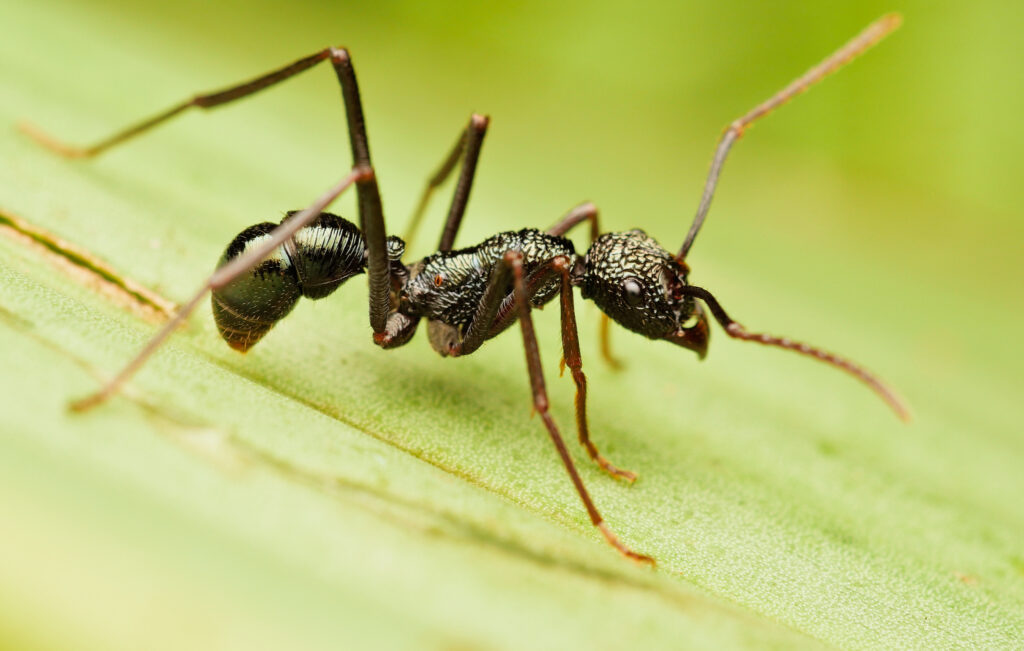
Here is a compilation of one of the omnipresent and morphologically very diverse groups of ants, Polyrhachis!


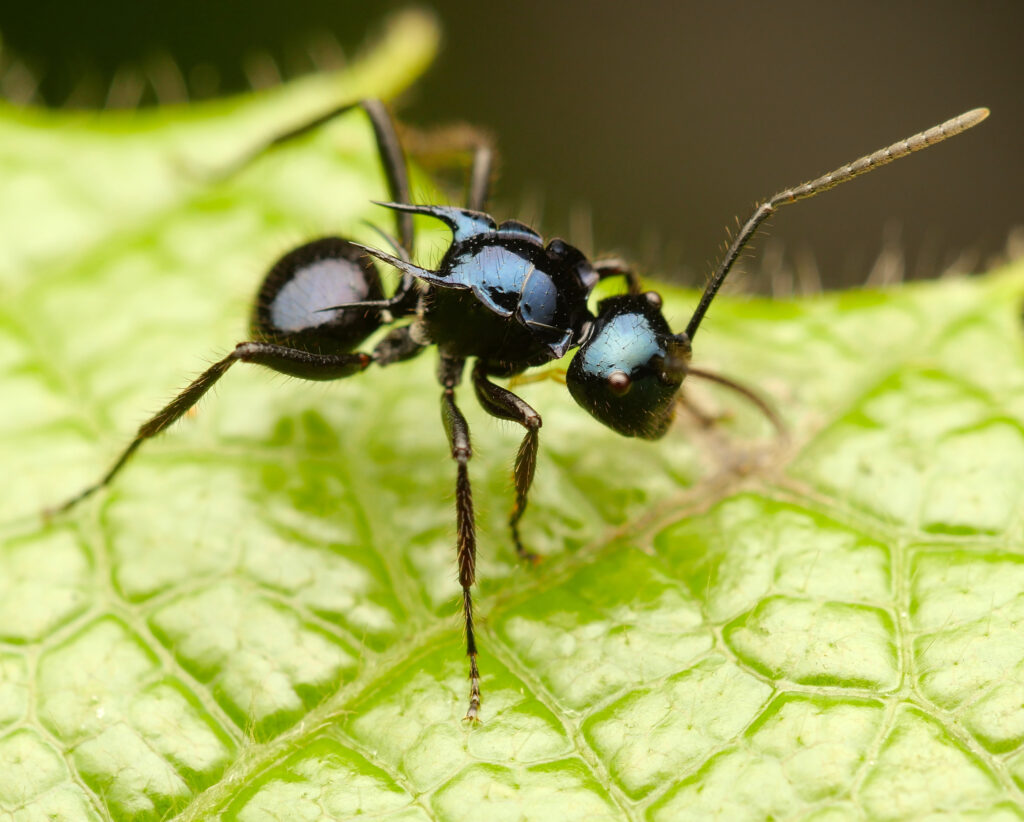


The perhaps one of the most stunning Odontomachus can be found here with ease: Odontomachus tyrannicus. It’s huge and has a metallic blue mesosoma, with a contrasting red gaster. The colonies grow quite large and while workers forage the vegetation, the nests are usually under logs on the ground. Not sure if the name tyrannicus is wholly deserved, but they do have a confident demeanor and a stingy attitude.
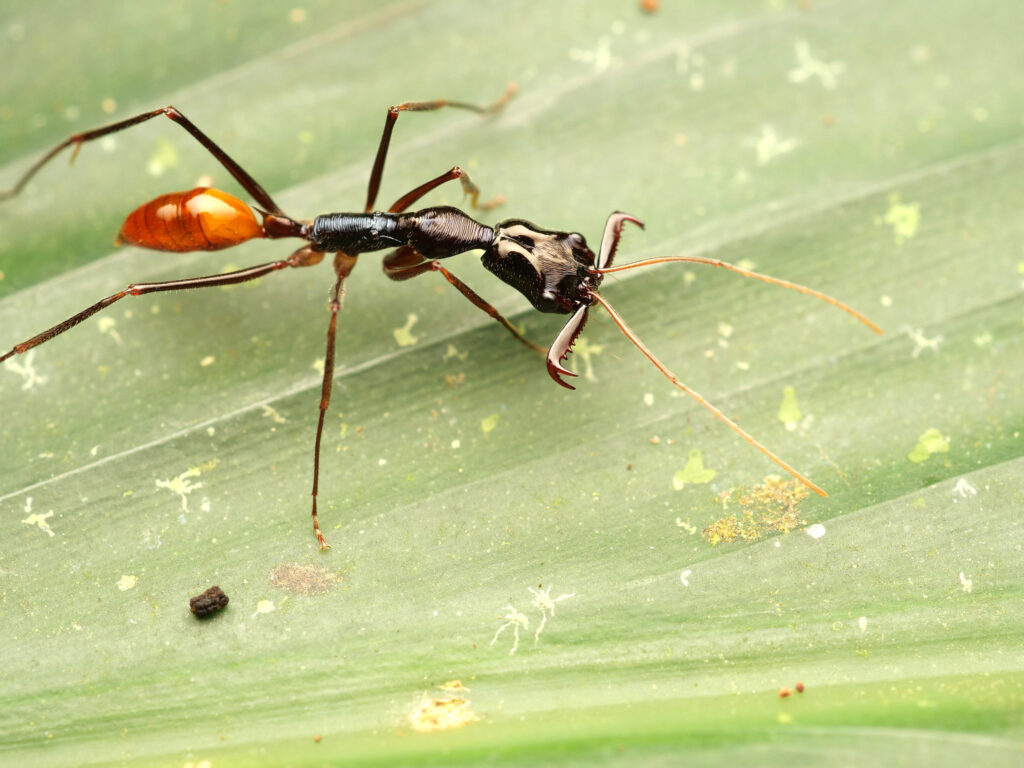
Aphaenogaster dromedaria is another stunning ground-dweller. Their neck is incredibly long, and so are their legs – I am not quite sure why evolution went that way, but it does look cool. I observed them carrying various flowers and larger insect prey, and possibly the neck facilitates easy food transport.
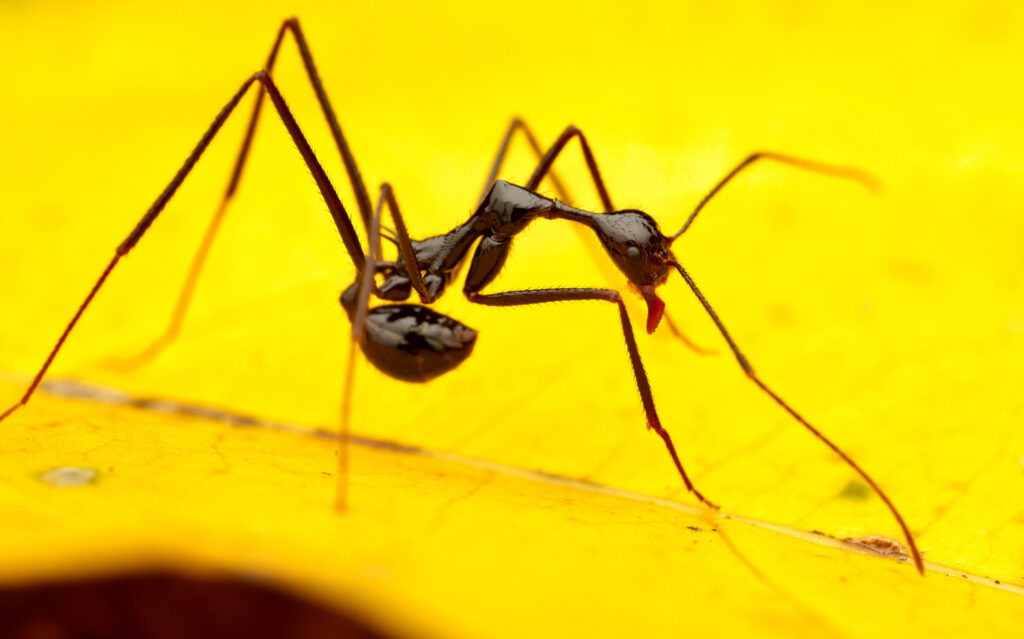
The village lives mostly from subsistence agriculture, and they have neat gardens that they care for, all by hand. To make room for their little plantation, the forest needs to be cleared. We were witnesses of such a clearing and, of course, we used the opportunity and found the giant Podomyrma cf. gastralis on one of the felled trees.

Myopias is one of the genera that went through a radiation on the island, producing many species that can be found nowhere else. Little is known about the life history of this genus, but it seems that at least some species are specialized millipede hunters. Myopias loriai is a large species, and once we spotted a queen of this dragging a millipede.
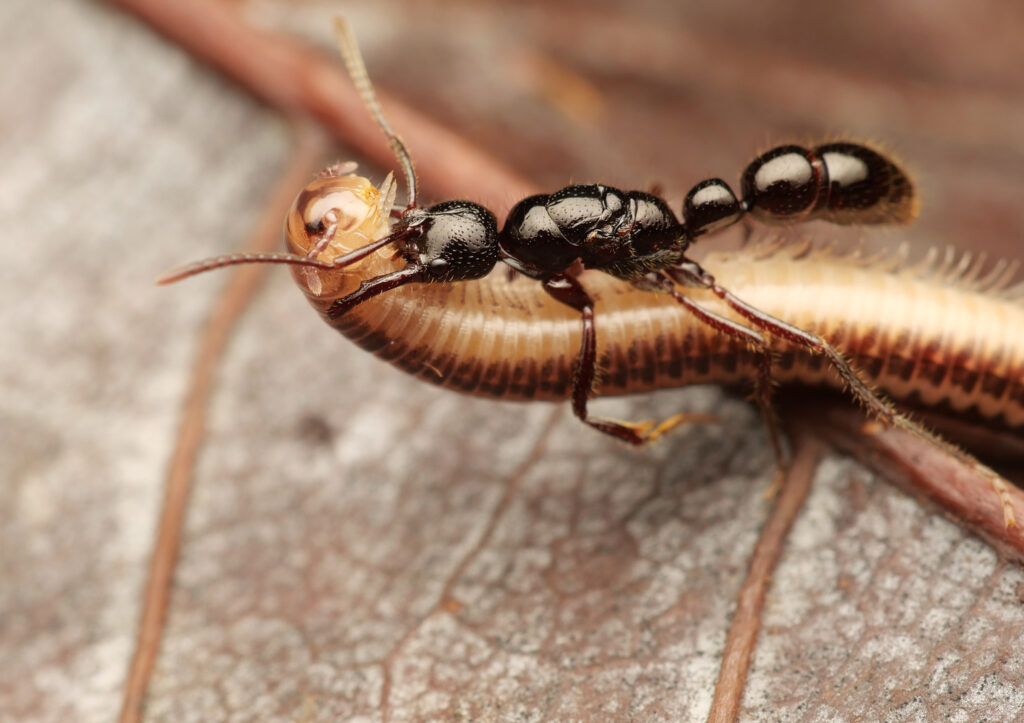
While our research led us up to roughly 900 m almost every day, we were intrigued to go a bit higher up. It is fascinating how a few hundred meters difference changes the ant fauna, and above 1200 m ants become much less abundant. We marched to a place where there used to be another small research camp, but it was abandoned.
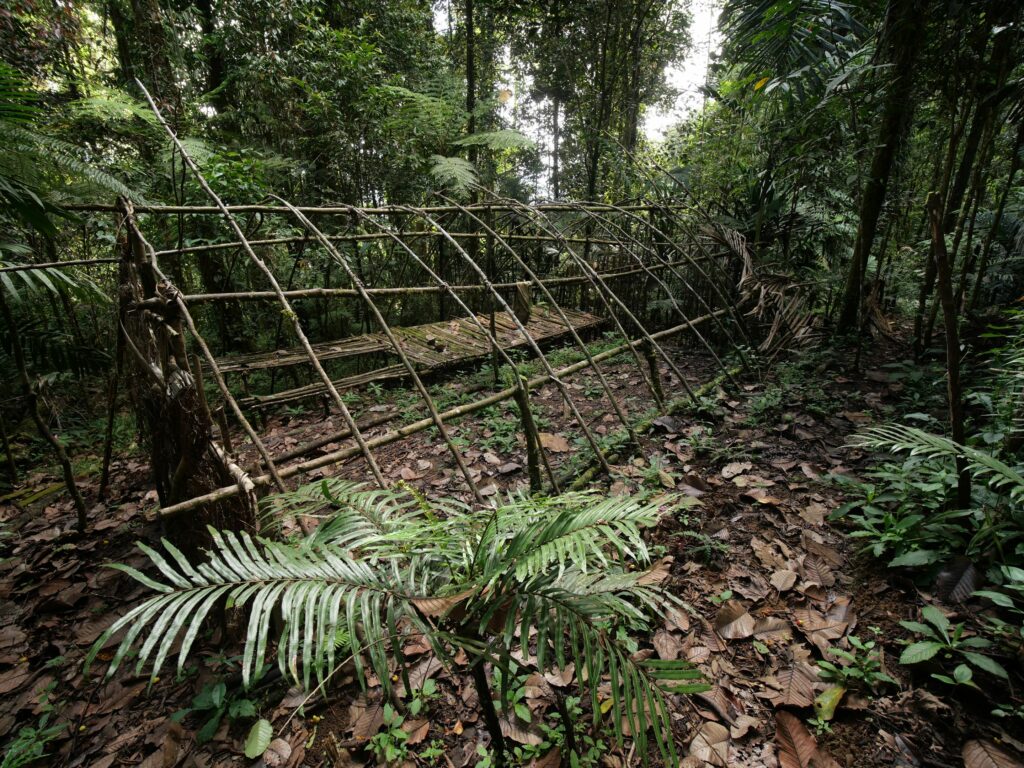
Up here, we observed a tiny red Aenictus raid on a Tetramorium nest on the ground. Aenictus are – as most army ants – specialized ant hunters, and will carry raided ant brood back to their nest to feed it to their own young.
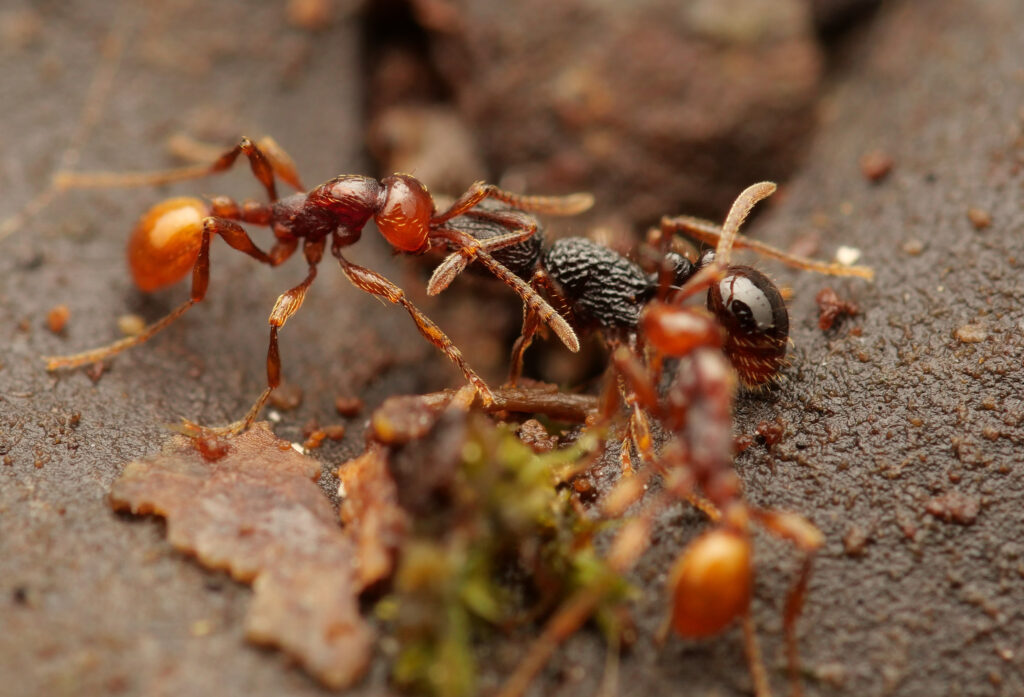
On the way back down the mountains, we stumbled upon a very peculiar ant worker. It was sitting calmly on a small wooden stick on the ground as if wanting to be photographed: A worker of the incredible Orectognathus hystrix, a peculiar trap-jaw ant with so many spines.
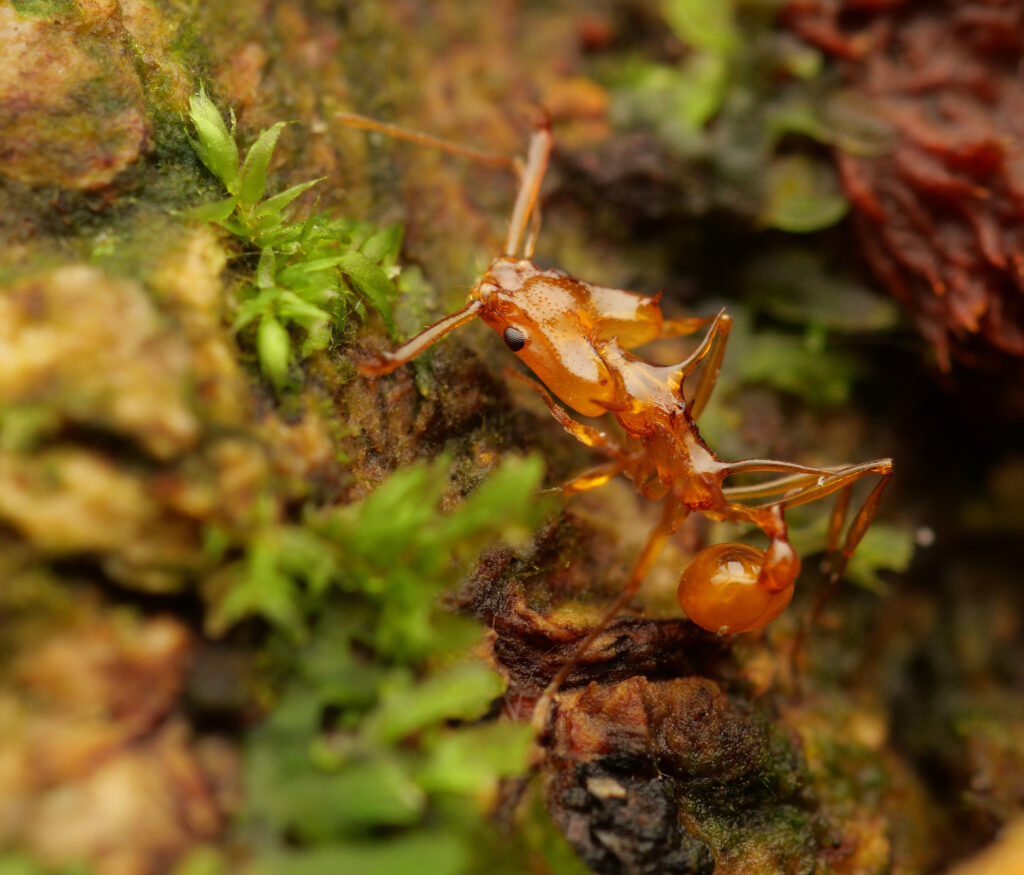
After this trip, we decided we wanted to see more of the stunning mountain landscape. So we took a short vacation and hiked from Numba up to the top of Mt Wilhelm, the highest mountain of Papua New Guinea (4500 m). This trip gave us the opportunity to search for Ancyridris, the only Papuan endemic ant genus that only occurs in higher elevation forests. Luckily (and thanks to our excellent guide!), we found two species almost immediately upon entering a cloud forest next to the village called Snowpass (about 1900 m – no, there is never snow!). Several workers were crawling slowly on the lower vegetation of the fantastic cloud forest. Ancyridris are equipped with intricate long spines and shiny body sculpture.

I hope you enjoyed this glimpse into the Papuan ant fauna! The truth is, I had trouble picking out my favorite photos – so if you want to see more, please check out my iNaturalist profile: https://www.inaturalist.org/people/myrmecophil Altogether, I have observed and photographed more than 100 ant species in situ during my stay.
I am very grateful for this opportunity and want to thank all the people involved, especially BRC, the Czech Academy of Sciences, and the communities of Baitabag, Numba and Kausi for hosting our research. And the biggest thanks go to our loyal main field assistants, who were watching and enjoying ants just as much as we did, Manfred Biul and Ali Poisman.


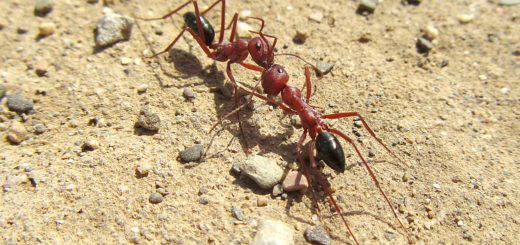


Thank you so much for sharing these pictures with us!
Thank you for sharing! Amazing photos.
Glorious stuff. Thank you!
Stunning photos Phil! I much enjoyed the read, thanks for the post.
Stunning pictures of even more stunning and beautiful ants!
Fascinating and stupendously illustrated blog, Phil. Thanks so much!
I wondered, how big is big regarding that Polyrhachis sexspinosa group species?
Also, if there ever was an ant deserving of having a plush toy / stuffed animal toy modeled after it, Tetramorium fulviceps is it!
Amazing photography! How do you get such good quality?